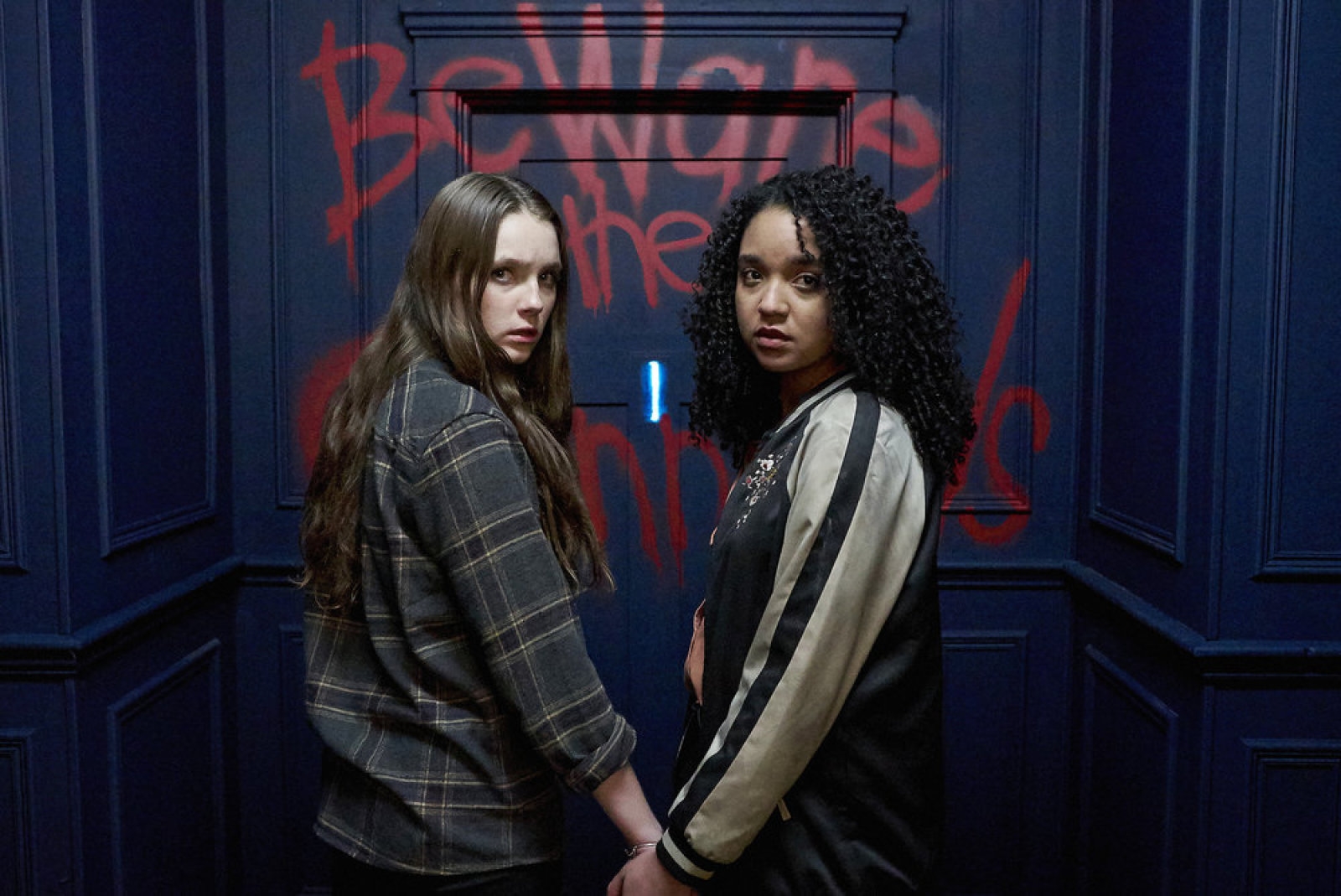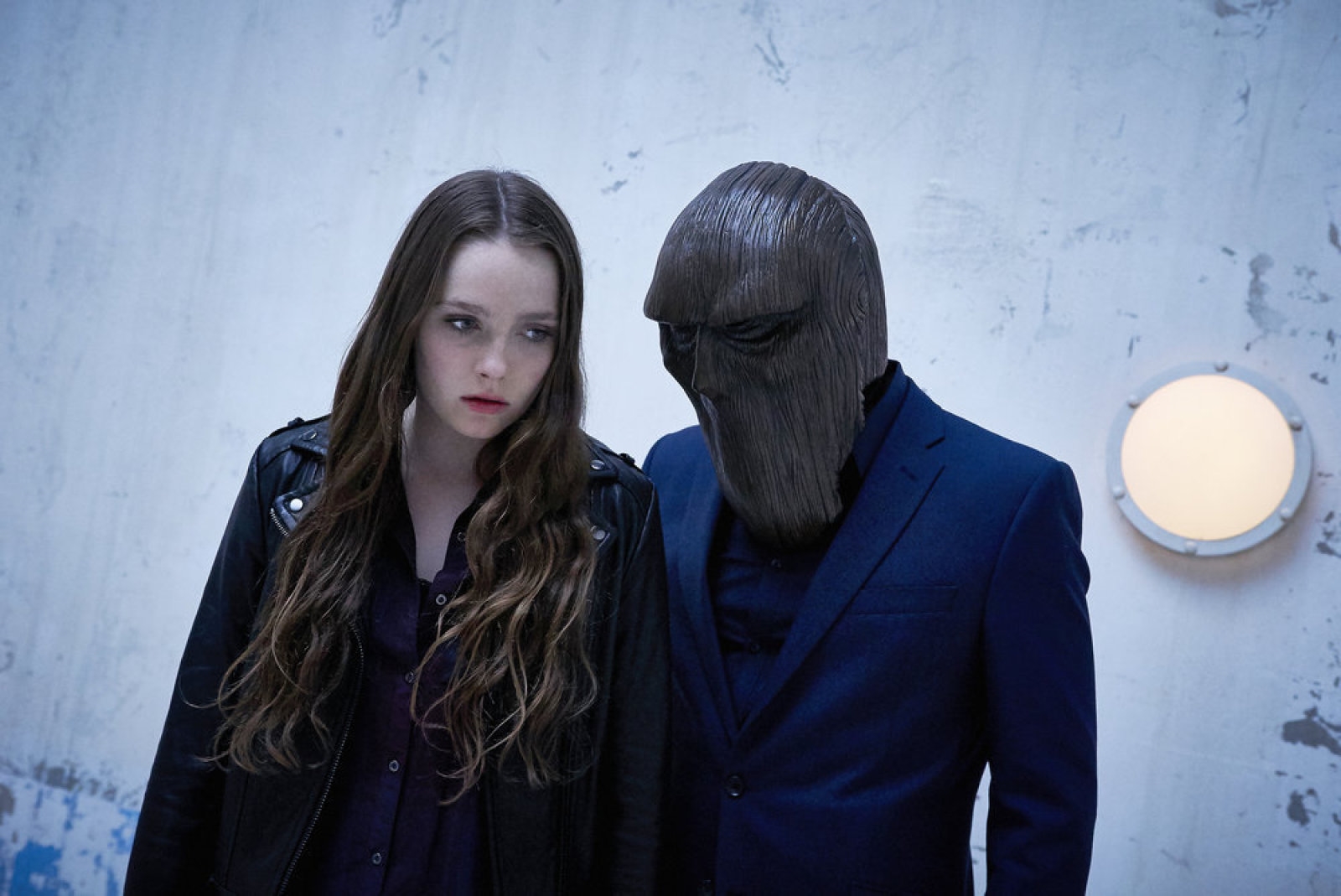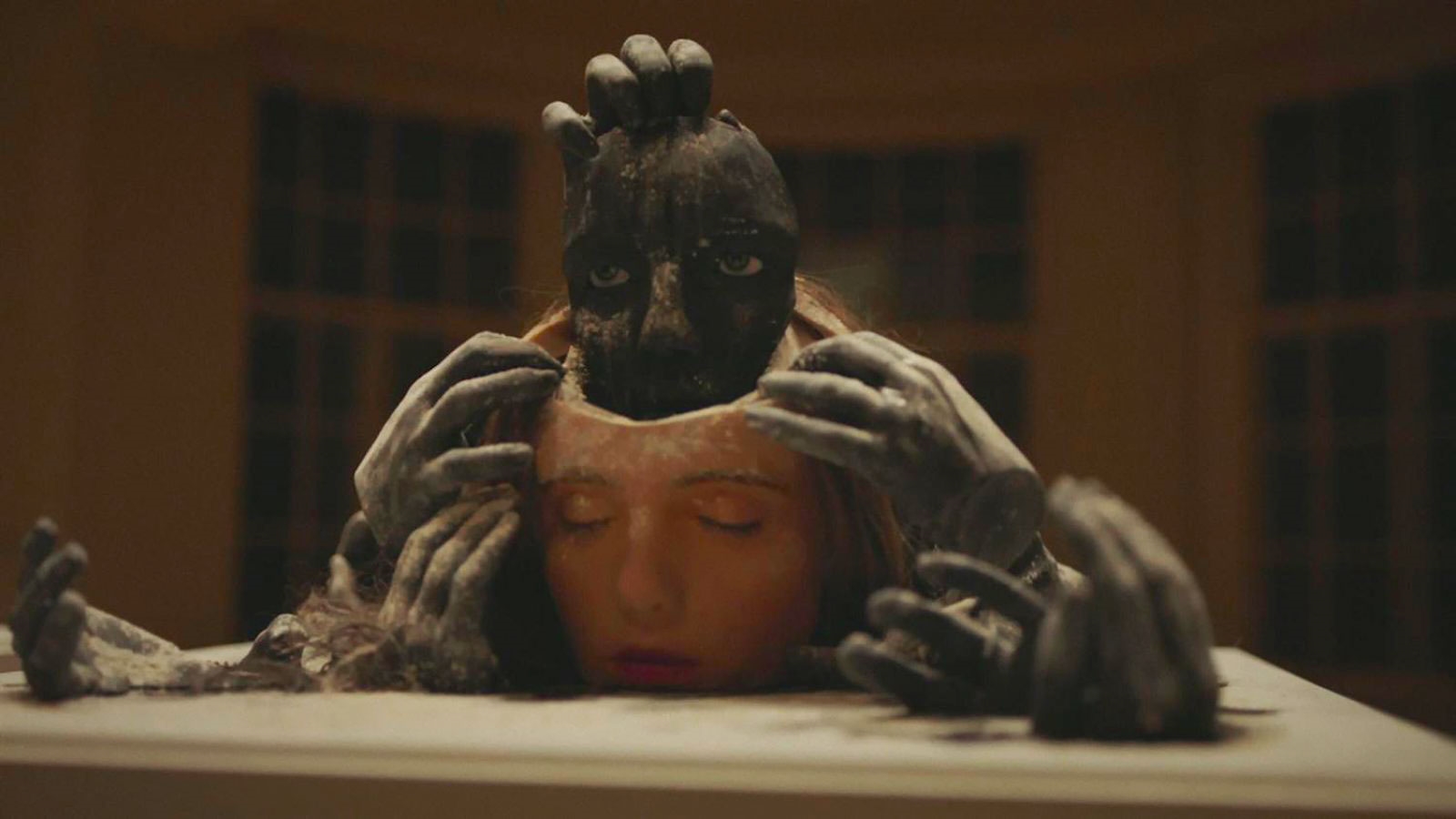Syfy’s Channel Zero is one of the best shows on television that you’re not watching. It’s a horror anthology series based on “creepypastas”– short, scary stories shared on forums and sites like Reddit. Slenderman is the most famous, but there are countless others in which (typically anonymous) writers take a stab at crafting modern folklore. For its first season, Channel Zero adapted one of the most popular creepypasta stories, Candle Cove. It centered on an old kid’s TV show that warped the minds of its young audience.
With its second season, which is airing now on Syfy, Channel Zero creator Nick Antosca set his sights on No-End House. It’s a twist on the standard haunted-house genre, focusing on a legendary Victorian home that can tap into your deepest fears and desires. I chatted with Antosca about what it’s like to bring creepypasta stories to TV, and why horror is an ideal genre for exploring our anxieties around technology and modernity.
Do you see this as a new type of folklore now? Does it differ from similar stories in the past?
No. The format may affect the content a little bit, but any kind of urban legends that permeate a culture are going to sort of reflect the fears and collective nightmares of that culture, and so creepypastas tend to have themes of technology because they’re internet-based. But they function in the same way that urban legends did when Candyman came out. They purport to be real. … They’re the alligators in the sewer as well as being a kind of stealth literature.
What do you think it is about the internet that attracts these types of stories?
The internet is, when you think about it, it’s a sinister place. There’s a freedom in that, but there’s an inherent threat to it. You don’t know who you’re interacting with, you lose your identity, and to me, there’s a sense of a great threat under the surface. Maybe that’s because I’m a paranoid or pessimistic person sometimes, but I find the internet is ultimately a sinister force. I am not an internet optimist, and interestingly, most creepypastas, to me, have this defining element of a larger sense of dread, the best creepypastas. There’s a sense of something out there in the world, a great mythology that you can’t fully see or comprehend, and you are a small part of this larger, fundamentally terrifying, story.
When we adapt creepypastas for the show, obviously we’re trying to build on the foundation of the stories, because they’re very short, usually. That’s certainly the case with Candle Cove. No-End House is a little longer, but it’s still pretty compact. We’re building new stuff, but the thing that I really try to preserve is the sense of greater dread in the world, a pervasive sense of menace.

Is horror the best genre for figuring out how we feel about technology?
Yeah, absolutely. Horror reflects cultural nightmares. You go back to Night of the Living Dead, which is, to me, the greatest allegorical horror film ever made. It’s a microcosm of American society beset by a larger menace … and they tear each other apart. The best modern horror films tend to deal with modern cultural fears, and that’s why I think, actually, The Ring is the perfect example of that. But I think creepypasta as a genre reflects that universal fascination and discomfort with technology. That’s why Candle Cove is such a great exemplar of what creepypasta is and can do.
Was nostalgia and older technology something you wanted to focus on when you adapted Candle Cove?
Yeah. It’s such a familiar experience, I think, to our generation, the generation that grew up watching TV. The last generation before the internet took over our lives. I think I’m almost the last age that you could be before that happened. I was in college when I got my first cellphone. I got my first smartphone a couple years out of college. As a child, I wasn’t constantly plugged in, so there was a freshness to the content that I did get. People back before photography was invented, they saw paintings like, “Wow, that’s remarkable. That’s special, a reproduction of something.” Now it means nothing. Sorry, I digress.
The way we went about it [in Candle Cove] is we watched a ton of really creepy old children’s TV shows, whether on YouTube or other places that we were able to find them. Peppermint Park, for example. You watch enough of them that you start to get a little discomfited, because who was making this stuff? Were they miserable, deranged people? Who in their right mind could think that this was delightful to a kid? Then we did our best to re-create that in doing the actual Candle Cove puppet show, and we shot that on the video cameras of the era, and did it analog. We decided to create something that might plausibly have actually been a children’s TV show.
These stories sometimes come from several people or there are different variations on a single story. How do you go about licensing or crediting the people who create creepypastas?
That’s a good question. One of the most important things to me is to credit the original author. That’s challenging because many of them are anonymous. Fortunately, Kris Straub and Brian Russell, who wrote the first two stories, at least their names are attached. [Producer] Max Landis had optioned Candle Cove, so we already had the rights. Then, for No-End House, I just always wanted to do that. I always knew that if we got a second season, that would be No. 2, and so we tracked the author down. Brian Russell actually works as an assistant on The Exorcist TV show.
He was around L.A., which is totally random, because these people are scattered all over the world. For the upcoming seasons, we had to do some more research. We’ve been ordered for third and fourth installments, and those authors were a little bit harder to track down, but we found them, we reached out to them. They were excited, and then the studio made an option agreement with them. From that point, it’s pretty straightforward. We credit them on the show, we pay them, I talk to them throughout the process. The challenge is going to be, I get asked all the time, “Will you do Russian Sleep Experiment? Will you do this story or that story?” There are some that I would love to do; like, I really want to do Russian Sleep Experiment, but we can’t find the original author.
I’m not sure how that works. I don’t know if you can set aside money for them in case they come forward and verify who they are or if you just can’t do it, but we’ll see. Fingers crossed that we have that problem in the future.
Have you talked about what the third and fourth seasons are going to be yet?
Oh, yeah. Yeah, we have them. I’m talking to you having just stepped out of the editing room for the third installment. We stopped at the summer, and each season has its own director. We’ve got an amazing director for the third season. I try to get really surprising directors. I’m not supposed to reveal what the story is that the third and fourth installment are based on, but the third one is a … we’re doing something a little bit different than we’ve done before.
We’re taking a series of posts, and there’s one element in it that we really loved, and so we’re building off of that. Then for the fourth season, it’s a much more obscure story. It’s not well known like Candle Cove or No-End House, but it’s a really beautiful, simple idea that I got very excited about. That one, we’re writing right now.
We really haven’t seen many successful horror shows on TV. For some strange reason, it’s always better suited to film. How did you guys go about bringing horror to TV?
To me, it’s not a strange reason. You can’t sustain that, the kind of fear that people expect from a horror movie, over episodes after episodes. You can’t do five or six seasons of what we think of as genuine horror. So horror on TV, good horror either has to be a limited series, or it has to be a different kind of horror. It has to be about a sense of dread, a pervasive feeling of menace or something off. That is why Twin Peaks is the greatest horror TV show.
It’s not about jump scares. It’s not about gore. It’s about a sense that lingers with you for years after you see it, of, “God, that was weird. That was disturbing. What was that?” That’s why we set out to do a show that wasn’t based on jump scares or the traditional kind of horror that you might expect from a horror film. It had to be building something else. That’s why creepypasta was a great resource, because that specific feeling that I talked about earlier was what we wanted to capture in the show.

Your work on Hannibal almost directly leads to some of what we’re seeing in Channel Zero. Did you bring anything over that you learned from Hannibal to this?
I watched the first two seasons of Hannibal as a fan on my own, and at some point in season two, it became clear to me, “OK, this show pretended to be a procedural and got on the air like that, but actually, it’s an art installation or something that’s pretending to be a TV show.”
It looks like a Matthew Barney art installation sometimes. I love the clarity of vision, and I loved the idea that you could basically do an art project on TV. That kind of speaks to, specifically, some of the design elements of No-End House, bringing Sarah Sitkin in, and Guy Maddin, who does the video art in it, and Olivier De Sagazan, the performance artist in season one. Both in Candle Cove and No-End House, we bring in fine artists to just do cool stuff in a TV show, which is not normal.
Channel Zero airs on Syfy on Wednesday’s at 10PM ET. It’s also available on Syfy’s on-demand library for cable subscribers.
This interview was condensed and edited for clarity.
What led you to adapt creepypasta stories for television?
Well, I was always a fan way before the show. And before being a fan of creepypastas, I’m a fan of horror fiction, and particularly short horror fiction. Authors like Thomas Ligotti, Laird Barron, Brian Evenson, and older authors really influenced me as a kid. Then it doesn’t feel to me like a fundamentally different thing to read a horror story online than it does to read a horror story in a book. Good writing is good writing; good ideas are good ideas.
Formats change, but nightmares don’t. Since probably 15 years ago, I was familiar with the genre, and I’m the kind of insomniac who spent a lot of time reading Wikipedia lists of all the people who have disappeared under mysterious circumstances, crazy shit like that, or Atlas Obscura. Of course, if you spend a lot of time reading weird shit on the internet, you’re going to end up at some creepypasta stuff.
Even average internet users have now heard of Slenderman. Candle Cove had a huge reach, even if it wasn’t a household term. No-End House had fan fiction. There’s fan-made video games. The strongest creepypastas … they hit a nerve. There’s a viral reach, so it was already in my consciousness. My manager called me one day and was like, “Do you know what Candle Cove is?” I was like, “Yeah, so what’s up?” There was originally talk of turning it into … a limited series, but immediately, my question was, “Why don’t we do an anthology show? There’s a million of these stories, an amazing untapped resource.” I was shocked that nobody had done it before.
(82)

